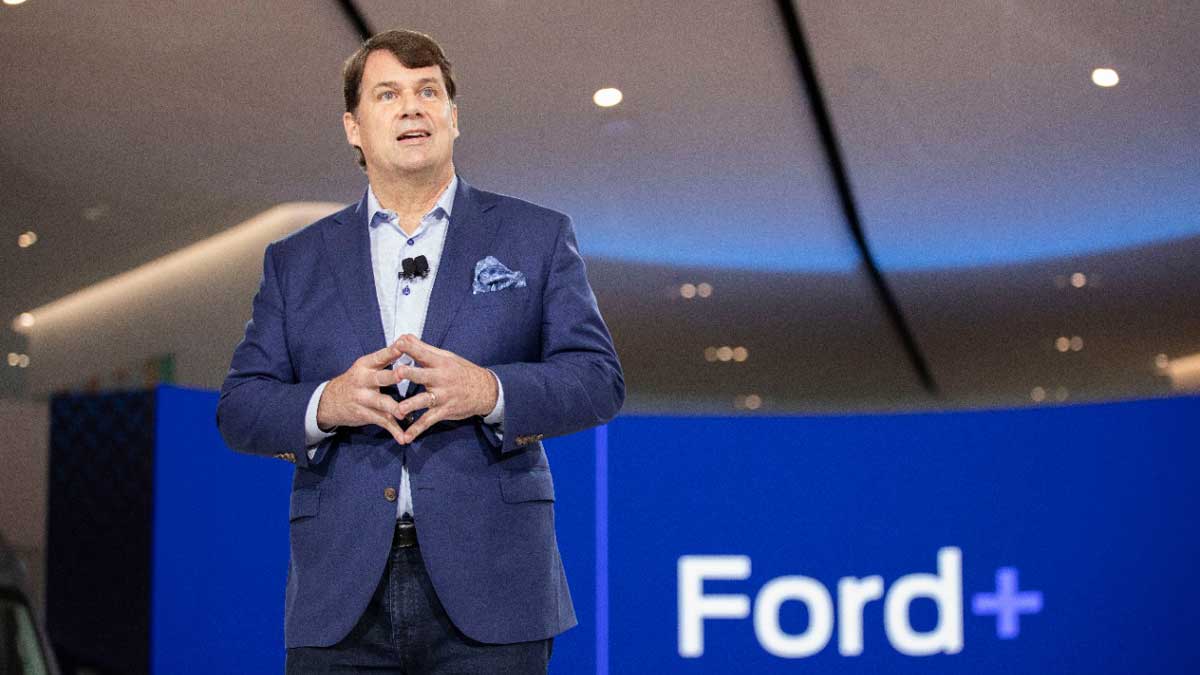US auto giant Ford has decided to split off its electric vehicle division, bestowing it the coveted “Model e” name it prevented Tesla from using for its Model 3.
At the same, it has seen fit to name its existing combustion engine vehicle business “Ford Blue”, a play on its famous blue oval logo.
Boasting “off the charts” reception of its F-150 Lightning electric ute and Mustang Mach-e, Ford CEO Jim Farley said the two new, but somehow interrelated, busineses will give the auto giant “unbridled innovation” in its Model e business and leverage its combustion engine know-how in the Ford Blue business.
Clearly, the automaker sees continued profits from combustion engines and the burning of fossil fuels for some time to come: the new Ford Blue businesses will continue pump out iconic names like the Bronco, Maverick and Ranger “that start-ups can only dream about”, the company said.
The split also reveals perhaps a division between the old guard that made Ford one of the world’s most recognisable car brands, and the new guard, which is focused on a period of change in the automobile industry that has not been seen since the invention of the combustion engine.
While the Model e business will allow a team of “the world’s best” software and electrical staff to “create truly incredible vehicles and digital expriences”, Ford Blue ‘s mission is “to delivery a more profitable and vibrant ICE business.”

More than anything, the carmaker’s transformation points to a recognition that young companies like Tesla have something it does not: the ability to think differently, and be agile, unconstrained by old ways of thinking.
A new strategy to sell electric vehicles via a “simple, intuitive e-commerce platforms” with “transparent pricing” and a personalized treatment via ambassadors is also a nod to the new methods being taken up in the auto industry as customers reject the dealership experience.
Alongside the two entities there will also be Ford Pro, which will look to supply government and other commercial fleets with both electric and ICE vehicles.
Short-term, Ford will double its commitment investment with a $US5 billion injection into its EV business.
Long-term, Ford Model e will look to produce 2 million electric vehicles annually by 2026. This will represent 30% of its global volume, and by 2030 Ford says half of its vehicle production will be electric.
By 2035, the company intends to achieve carbon neutrality, using 100% local and renewable electricity in all of its production operations.

Bridie Schmidt is associate editor for The Driven, sister site of Renew Economy. She has been writing about electric vehicles since 2018, and has a keen interest in the role that zero-emissions transport has to play in sustainability. She has participated in podcasts such as Download This Show with Marc Fennell and Shirtloads of Science with Karl Kruszelnicki and is co-organiser of the Northern Rivers Electric Vehicle Forum. Bridie also owns a Tesla Model Y and has it available for hire on evee.com.au.


